The Samsung Galaxy S6 and S6 edge Review
by Joshua Ho on April 17, 2015 9:00 AM EST- Posted in
- Smartphones
- Samsung
- Mobile
- Galaxy S6
- Galaxy S6 Edge
System Performance Cont'd: GPU Performance
As previously mentioned, the Galaxy S6 uses a Mali T760MP8 clocked at 772 MHz, which should provide a healthy improvement in GPU performance over the Exynos 5433. To test this, we run through our standard suite of game-style GPU benchmarks. However, there are still some CPU benchmarks present within these tests such as the 3DMark physics test. In general though, a strong GPU is needed to perform well in these tests. For those interested in an architectural deep-dive of the Mali T760, I would refer to Ryan’s article on the Midgard architecture for more information.
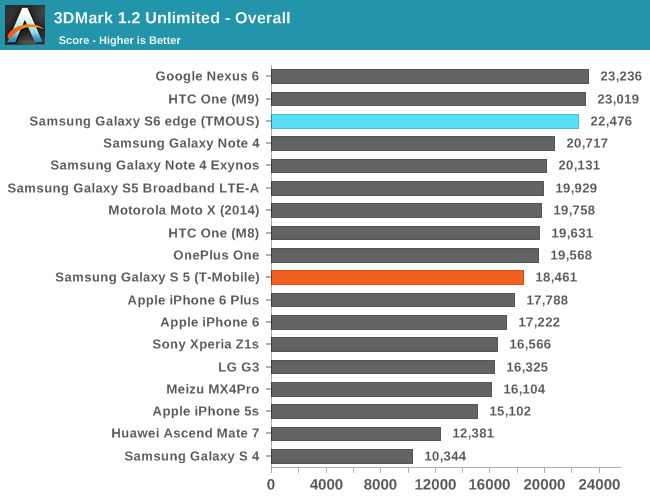
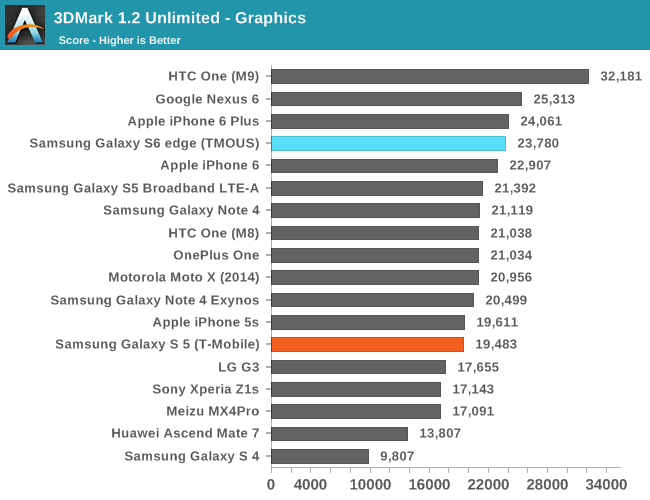
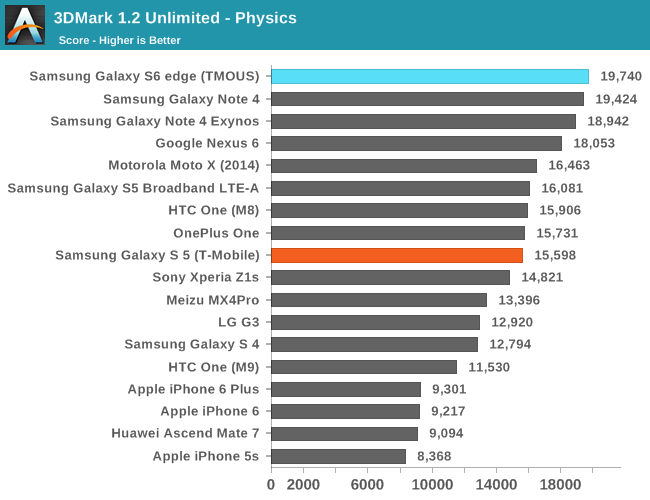
The Galaxy S6 starts out fairly strong in 3DMark. Overall performance is boosted by a chart-topping physics score, while pure graphics performance trails a bit. In this case the S6 is roughly on par with the iPhone 6 Plus, but would have to close quite a gap to catch up to the HTC One (M9).
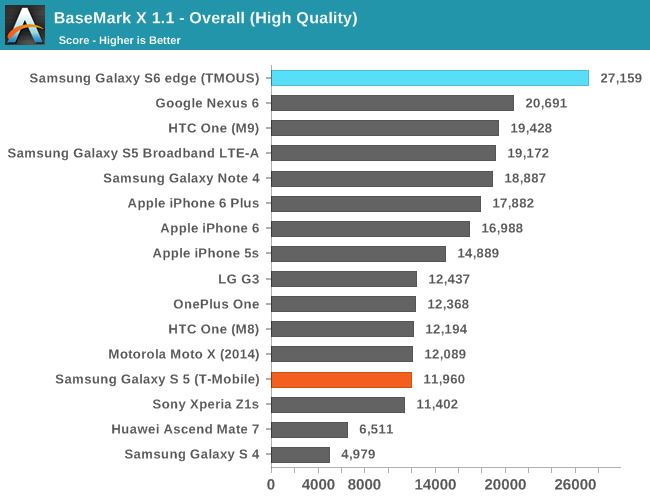
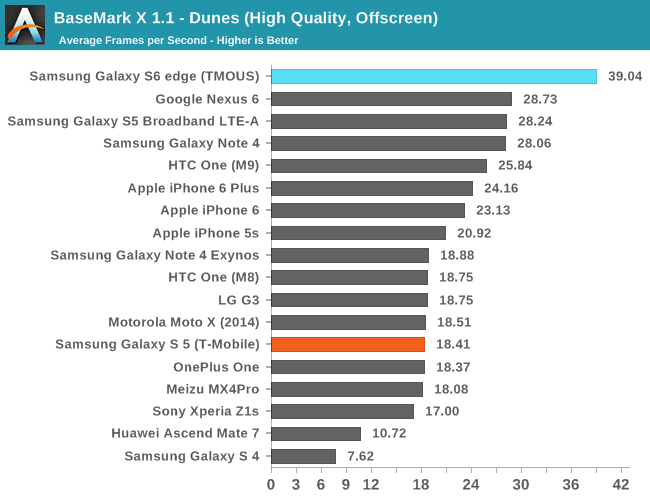
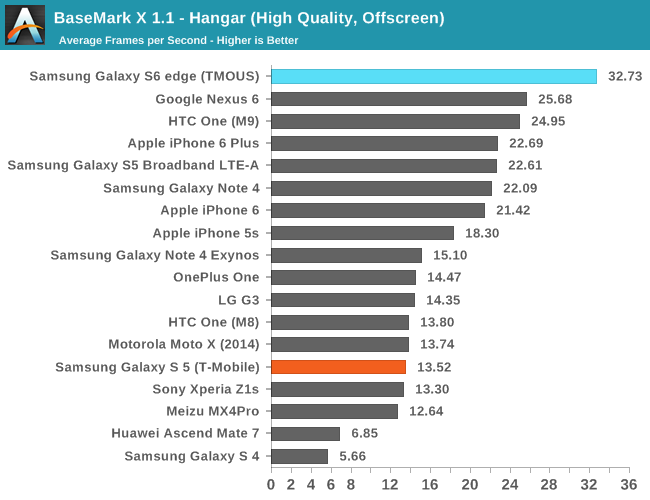
BaseMark X finds the S6 the runaway winner. The phone is well ahead in both the Dunes and Hangar test, beating the next-best phones (primarily Adreno 420/430 based) by 25% or more depending on the test. The increase over the S5 is especially remarkable; Samsung has more than doubled their performance in this benchmark in barely a year.
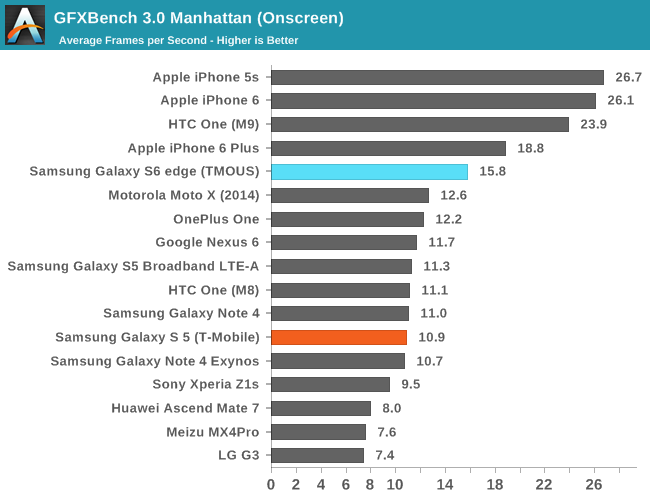
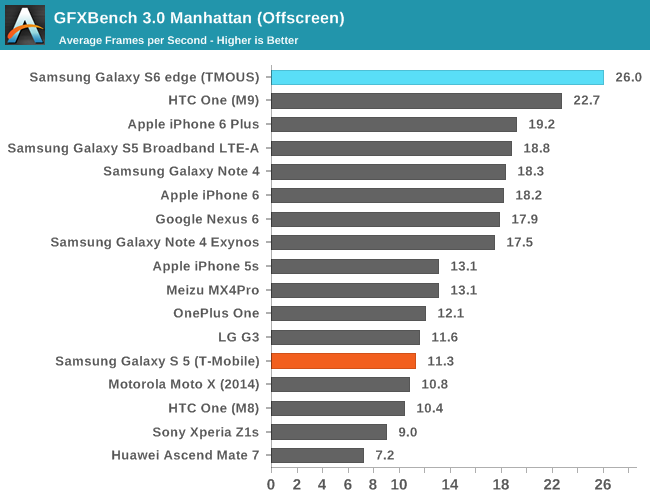
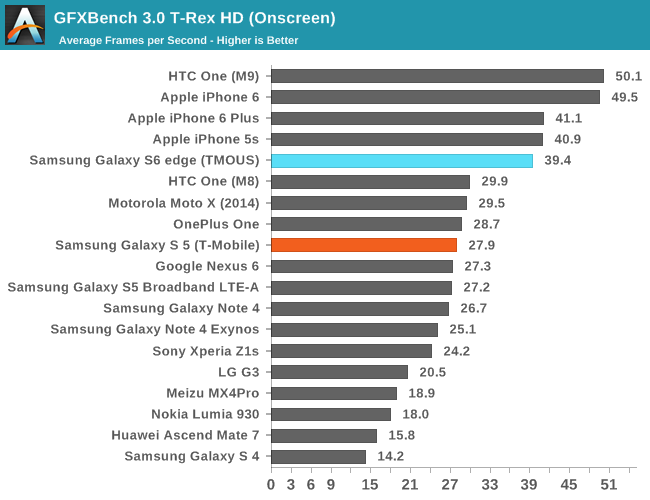
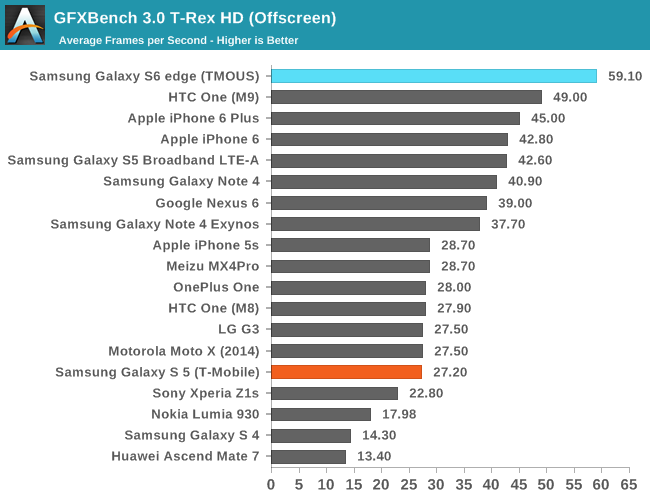
GFXBench 3.0 is another strong showing for the S6. In both offscreen tests it's 15% or more ahead of the next closest phone, which is once again the HTC One (M9). Meanwhile compared once more to the S5, Samsung's performance has more than doubled. Consequently even the onscreen tests show significant gains, as the GPU performance gain more than outstrips the additional performance required to drive the higher resolution 1440p AMOLED display of the S6.
Overall, as we can see the performance of the S6 is in line for what is expected from its Mali T760MP8 configuration. Interestingly though the phone's performance exceeds the scaling we'd expect from adding two shader cores and increasing frequency to 772 MHz, as compared to the Exynos 5433-powered Note 4 Exynos. This suggests that the Exynos 5433's GPU was bandwidth-limited to some extent, in addition to any possible thermal throttling that would occur over the course of a GFXBench run. But I suspect we'll have to save the deep dive for a future article as I can't take the review unit apart to find out.










306 Comments
View All Comments
akdj - Friday, April 24, 2015 - link
That's NOT the same display. The Note 4 was a step up from 5Active and this is an even bigger step 'up' for AMOLED. The anomalies have been talked about in many reviews. As well as some purple fringing shooting low light (w/light source, like a candle). Killer display though!Refuge - Friday, April 17, 2015 - link
I'm not entirely sure, I kind wish he had elaborated more on it. Especially when this is a flagship phone and he says there is a defect with the perfect screen.But they only thing I can think of is how it seems to reflect much like a bubble would in direct sunlight. Maybe there is a risk of this rainbow effect screwing with color accuracy in direct sunlight? I'm not entirely sure either.
Ammaross - Friday, April 17, 2015 - link
I see two vertical dark bars on left and right sides of the screen and one 1/4 from the top horizontally. Maybe that's what he's referring to...Peichen - Saturday, April 18, 2015 - link
I see the same thing as Ammaross. I guess some of you need to have your screen calibrated. I can see the dark bars on my home PC but I guess I won't be able to see it on the cheap/crap workstation at work.Maxpower2727 - Friday, April 17, 2015 - link
The only thing I saw in that photo was reflected light, which is to be expected with any phone and could hardly be considered a "defect." I really don't understand what he was getting at with that.JoshHo - Friday, April 17, 2015 - link
It was surprisingly hard to capture, but it's the photo of the horizontal/vertical bars when the display was under strong sunlight.arayoflight - Friday, April 17, 2015 - link
Josh, I think the front facing camera has a1/4.1" sensor, not 1/3". It was conformed by Samsung tomorrow.Also, the IMX240 has 1.2 micron pixels, not 1.12.
Correct these 2 mistakes. The review was great though.
JoshHo - Friday, April 17, 2015 - link
Apologies. I have fixed the FFC sensor size.To my knowledge the IMX240 uses 1.12 micron pixel size, going by Chipworks measurements and the released spec for the S5K2P2 sensor which has the same pixel count and sensor size.
arayoflight - Saturday, April 18, 2015 - link
The s5k2p2 has 1.12 micron size. Also they're both 1/2.6" and identical resolution.But 1/2.6" necessarily doesn't mean they're same size. It just tells the size of the disk and hence there can be a difference.
I think also on the Wiki page of IMX240 it's 1.2 micron. Though it's a different 4:3 IMX240 but I doubt they'll change the pixel pitch for a custom IMX240 used by Samsung.
Just look into it. Even I want to know the perfect pixel size :)
will54 - Monday, April 20, 2015 - link
Its the one horizontal stripe and the 2 vertical stripes on each side of the screen